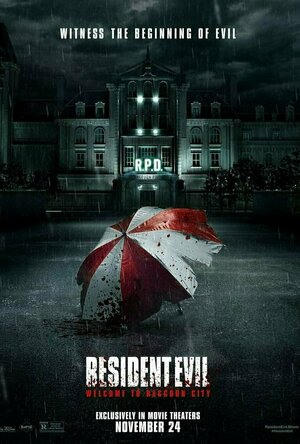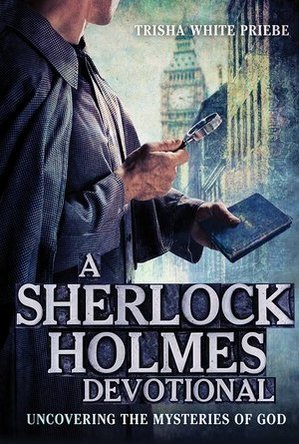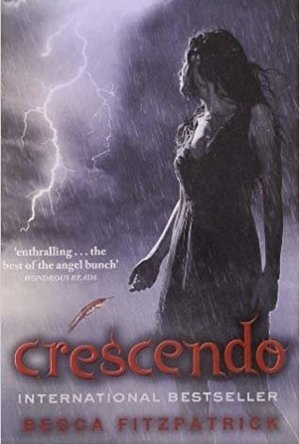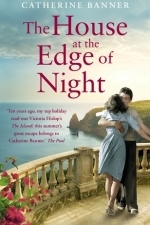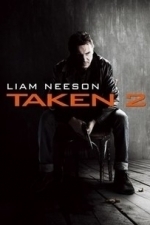Lee KM Pallatina (951 KP) rated Resident Evil: Welcome to Raccoon City (2021) in Movies
Feb 9, 2022 (Updated Feb 9, 2022)
Set in the fictional destination of Racoon City, the movie quickly introduces characters Claire Redfield, Chris Redfield, Leon. S. Kennedy, Jill Valentine and Albert Wesker amongst others.
The plot trotts along nicely for a short while before it begins racing between Two crammed together story's, RE1 & RE2 (with traces of RE3 plotted around).
Jumping between Claire and Leon wandering around RPD and Chris, Wesker and Jill lost wandering the halls of Spencer Mansion.
The visual effects are rather shoddy in places and the characters other than Claire seem to have a low IQ and a hard-on for danger.
The characters origin story's are unnecessary and mostly pointless, especially Leon's making them all seem like post grad high-school students.
There was no big bad showdown and no explanation or hint for the city's destruction other than 'umbrella fucked up'.
The direction is sloppy at best and everything is rushed, the characters looked almost nothing like their videogame counterparts and key plot points were missing throughout and the final scene looked like something from a teenage expendables movie...
I was unsure what to rate this but an overall out of 10, for me it's a 2.5.
As for this movie, my name is Lee, and I remember everything, lol.
Haley Mathiot (9 KP) rated A Sherlock Holmes Devotional: Uncovering the Mysteries of God in Books
Apr 27, 2018
Sherlock Holmes was an amazing detective. The Bible is an amazing book. So why not make a Sherlock Holmes devotional? The answer is because the two are about totally different things, and when you try to make a secular thing spiritual, you end up with poison.
I requested this book with suspicion (the same publisher had a bunch of other awesome-looking books, and this was the only one I was iffy about), but I hoped it would surprise and maybe impress me. Sadly, it’s actually worse than I imagined.
For example: The first devotional is about the Case of the Cardboard Box, where a woman has a package delivered to her with two severed ears. The devotional goes on to praise Sherlock for solving the crime, and then diverts to “We can hear the voice of God. Sherlock said the ear is amazing. See how these two are connected?” And yes obviously that’s a paraphrase. But it was the point of the devotional.
In staying in this same idea, let me tell you a story and give you a practical on how it made me feel.
Did you know in the Appalachian mountains, some people put Mountain Dew in their babies bottles? It’s cheaper than milk and the kids get addicted to it young. Obviously it causes major health issues like diabetes and sever obesity, the kids end up loosing their teeth before they even break skin, and (though I haven’t researched it, I’m sure) that some have died.
In the same way, the Bible tells us that newer Christians thrive on smaller amounts of doctrine, simple statements of truth. In the new testament, a Christian not moving past that stage is considered an adult still drinking baby milk. But the milk isn’t enough, and eventually, their faith will die if they don’t move forward. So Mountain Dew is like Baby Milk. See how the two are connected?
Sorry, but this book isn’t baby food. It’s poison. I love Sherlock and I love Jesus. But I find this book offensive

The Evangelicals: The Struggle to Shape America
Book
This groundbreaking book from Pulitzer Prize–winning historian Frances FitzGerald is the first...
History Religion
Haley Mathiot (9 KP) rated Crescendo (Hush, Hush, #2) in Books
Apr 27, 2018
Genre: YA
ISBN: 9781416989431
Publication date: October 19th 2010 by Simon & Schuster Children's Publishing
Rating: 5
(No summary, to keep spoilers out!)
Ok. Crescendo definitely wasn’t what I expected. I definitely liked it—maybe loved it. But I can’t say I enjoyed reading it. I won’t spoil it, but we’ll just say there were times when I wanted to wring the characters necks. It was wonderful, and it was miserable.
And Patch. Oh Patch.
Ok. Can’t say anything else about Patch.
I admire a book that surprises the crap out of me. Crescendo did that. I had absolutely no idea of who was the bad guy until the very last page, and it was nothing but wishful thinking that kept the hero in his position. Although the tension, both romantic and emotional, made it difficult to read at times, I tore through it and couldn't put it down.
So here are the things that made it wonderful:
1. The plot was woven perfectly, intricately, and complexly, and it surprised me. There was so much to it, that it might take a while for me to completely wrap my head around it. It did not have plot overkill, thank goodness, but it would have if it hadn’t been organized and written so well.
2. The emotional turmoil was very real… reading it was almost depressing… if I hadn’t had so much faith in Patch… Wow. Having faith in Patch isn’t a good thing, is it?
3. Not only was the plot complicated, but it was fast paced the entire time. There was no down-time, there was nothing simple.
As far as the writing, I have nothing great to say about it. It was every-day satisfyingly mediocre writing style and vocabulary, but it wasn’t bad.
And of course, the characters… well they don’t have that many redeeming qualities, do they? I mean, really. Name five things about Patch that make him a worth-while guy, besides being sexy and smelling delicious. And yes, sometimes I wanted to yell at Nora to forget about her pride and just “do it!” (no not that! you’ll understand when you read it!)
Now for my favorite part: The end. It was good and bad: Good because I got the end that I wanted in the first place (!!!) and bad because at the very end, the last paragraph, I read it and freaked out… SERIOUSLY? BECCA, THAT’S NOT AN ENDING! It was worse than Catching Fire. But the rest was wonderful! *swoons*
So. I absolutely recommend Crescendo. I recommend reading it when you have all day to devote to it, because you won’t want to stop and leave yourself feeling angry and depressed. Because really, the whole mood of this book is angry, sad, and depressing. But it was ok that way.
Then again… you may want to wait to read it until book 3 comes out. Because there will definitely be a book 3. And I definitely want it right now.
And that’s all I have to say about that.
Content/recommendation: Ages 16+ for some sensuality. And you have to read Hush, Hush first or none of it will make any sense.
By the way, I got my ARC of Hush Hush at ARC swap. So head over there to see if there are any goodies you’d like to swap for. Last I checked, there was an ARC of Fallout, Tyger Tyger, Party, Perchance to Dream, and quite a few more. http://arcswap.webs.com
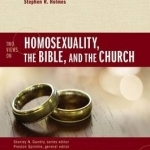
Two Views on Homosexuality, the Bible, and the Church
Preston Sprinkle, William R. G. Loader, Megan K. DeFranza and Wesley Hill
Book
No issue is more divisive or more pressing for the church today than homosexuality. Two Views on...
Hazel (1853 KP) rated The House at the Edge of the Night in Books
Oct 20, 2017
Castellamare, a small island off the south coast of Italy, is the perfect setting for a captivating epic tale that traces a family from the beginning of the 1900s until the more recent year of 2009. Centred at the island’s only bar ‘The House at the Edge of the Night’, the island inhabitants suffer through two world wars, fascism, tourism and recession, however, the bar determinedly stays standing. But what happens in the rest of the world is largely ignored by the island dwellers that prefer to come to the bar to learn about friendships, betrayals and love affairs.
The House at the Edge of the Night begins on the mainland where the Dr Esposito removes the foundling Amadeo from care. Following in his foster father’s footsteps, Amadea Esposito trains to be a doctor and eventually lands himself a position on Castellamare. Having never had a doctor on the island before, Amadeo is welcomed by almost everyone, however, an illicit affair puts an end to his career. Fortunately, The House at the End of the Night provides Amadeo with an income and a home for his new wife, Pina, and his four children.
The story takes the reader through the Second World War, something that is interesting to read from the Italian’s point of view. Rejecting fascism, the Islanders are enraged when their boys are called up to join the war, especially as many, including Amadeo’s three boys, never return. With only a daughter, Maria-Grazia, remaining, the Esposito’s keep the bar going for lack of anything better to do.
But war brings good things as well as bad. Washed up on sure, the British soldier Robert brings good luck to the superstitious villagers, eventually marrying the lovely Maria-Grazia. The story continues through the childhood of their unruly boys, coming to an end as their granddaughter reaches adulthood.
A doctor and a barman, Amadeo also had a love for stories. Listening to his patients and patrons fantastical tales, Amadeo keeps note of them all in his personal notebook. Split into five parts, the book contains a story at the beginning of each section that, although mythical, set the scene for the subsequent narrative.
Alienated from the rest of the world, the Islanders are stuck in their ways, attributing any luck – good and bad – to their patron saint, Sant’Agata. Whenever life gets tough, the people on Castellamare turn to prayer, which although is part of their Catholic faith, often comes across as superstitious and irrational. They refuse to believe any logical explanation, preferring to regard their island as a magical, preternatural site.
There is no specific storyline with the usual climax and conclusion; instead, it works as a biography of a fictional family. It is interesting to regard the impact of the rapidly developing world on the island, from the introduction of a building society and the eventual launch of the Europe – something that the Islanders are naturally against. The inhabitants of Castellamare come across as naïve, but their backgrounds and beliefs are far more interesting than the average person.
The House at the Edge of the Night is a story of stories. It provides more than to be expected from a novel. Catherine Banner writes of beautiful settings, compelling characters and fascinating events that both amuse and entertain in a moving way.
With Victoria Hislop’s novels such as The Island being all the rage amongst many female readers, Catherine Banner’s The House at the Edge of the Night is destined for success. It is a great book to read on holiday or at home, and perfect for book clubs. This book is the ideal escape from the stresses of everyday life.
Hazel (1853 KP) rated The House at the Edge of the Night in Books
Dec 7, 2018
Castellamare, a small island off the south coast of Italy, is the perfect setting for a captivating epic tale that traces a family from the beginning of the 1900s until the more recent year of 2009. Centred at the island’s only bar ‘The House at the Edge of the Night’, the island inhabitants suffer through two world wars, fascism, tourism and recession, however, the bar determinedly stays standing. But what happens in the rest of the world is largely ignored by the island dwellers that prefer to come to the bar to learn about friendships, betrayals and love affairs.
<i>The House at the Edge of the Night </i>begins on the mainland where the Dr Esposito removes the foundling Amadeo from care. Following in his foster father’s footsteps, Amadea Esposito trains to be a doctor and eventually lands himself a position on Castellamare. Having never had a doctor on the island before, Amadeo is welcomed by almost everyone, however, an illicit affair puts an end to his career. Fortunately, The House at the End of the Night provides Amadeo with an income and a home for his new wife, Pina, and his four children.
The story takes the reader through the Second World War, something that is interesting to read from the Italian’s point of view. Rejecting fascism, the Islanders are enraged when their boys are called up to join the war, especially as many, including Amadeo’s three boys, never return. With only a daughter, Maria-Grazia, remaining, the Esposito’s keep the bar going for lack of anything better to do.
But war brings good things as well as bad. Washed up on sure, the British soldier Robert brings good luck to the superstitious villagers, eventually marrying the lovely Maria-Grazia. The story continues through the childhood of their unruly boys, coming to an end as their granddaughter reaches adulthood.
A doctor and a barman, Amadeo also had a love for stories. Listening to his patients and patrons fantastical tales, Amadeo keeps note of them all in his personal notebook. Split into five parts, the book contains a story at the beginning of each section that, although mythical, set the scene for the subsequent narrative.
Alienated from the rest of the world, the Islanders are stuck in their ways, attributing any luck – good and bad – to their patron saint, Sant’Agata. Whenever life gets tough, the people on Castellamare turn to prayer, which although is part of their Catholic faith, often comes across as superstitious and irrational. They refuse to believe any logical explanation, preferring to regard their island as a magical, preternatural site.
There is no specific storyline with the usual climax and conclusion; instead, it works as a biography of a fictional family. It is interesting to regard the impact of the rapidly developing world on the island, from the introduction of a building society and the eventual launch of the Europe – something that the Islanders are naturally against. The inhabitants of Castellamare come across as naïve, but their backgrounds and beliefs are far more interesting than the average person.
<i>The House at the Edge of the Night</i> is a story of stories. It provides more than to be expected from a novel. Catherine Banner writes of beautiful settings, compelling characters and fascinating events that both amuse and entertain in a moving way.
With Victoria Hislop’s novels such as <i>The Island</i> being all the rage amongst many female readers, Catherine Banner’s <i>The House at the Edge of the Night </i>is destined for success. It is a great book to read on holiday or at home, and perfect for book clubs. This book is the ideal escape from the stresses of everyday life.
Gareth von Kallenbach (980 KP) rated Taken 2 (2012) in Movies
Aug 7, 2019
You’d think that after all the bad guys Liam Neeson’s character, former C.I.A. operative Bryan Mills,
killed in the original “TAKEN” there would be none left …. WRONG …. I guess even in action
movies, the bad guys have families, friends, and fellow criminals who would want revenge and despite the fact that they are villains and deserve whatever sort of punishment the protagonist can dish out.
It is a year after the events in “TAKEN” and retired intelligence agent Bryan Mills (Neeson), is trying to
adjust to life as a civilian security expert working in the private sector while dealing with the fact that his daughter is dating and attempting to pass her driver’s test (for the third time). After Maggie’s step-father walks out on Maggie and Lenore, Bryan invites them to spend time with him in Istanbul after completing a job there.
However, before the vacation begins the happy reunion is ruined when Murad Hoxha (Rade Serbedzia)
the father of the main antagonist in “TAKEN”, kidnaps Lenore and attempts to kidnap
Maggie as well in retaliation for the death of his son.
The film does require some at times absurd leaps of faith and knowledge to drive the story but If you are
coming for acting, a complex story, and such, your simply in the wrong place.
If a fresh batch of bad guys just itching to get their collective butts kicked by Neeson is what you want,
then it will deliver. At the end of the screening the crowd at the theater stood up and gave the film a standing ovation while coincidentally the audience screamed ‘AWESOME’!

More Than Just Making it: Hope for the Heart of the Financially Frustrated
Book
When you're trapped in a cycle of financial frustration, and you feel like you've tried everything...
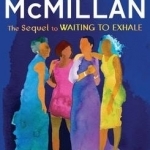
Getting to Happy
Book
In "Waiting to Exhale", Terry McMillan chronicled the lives and love affairs of women in their...
